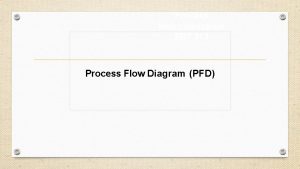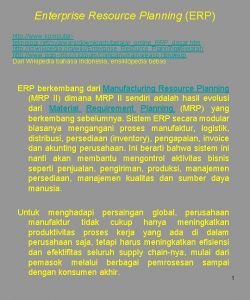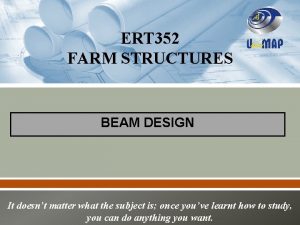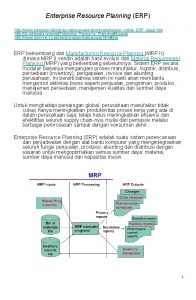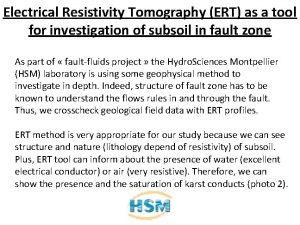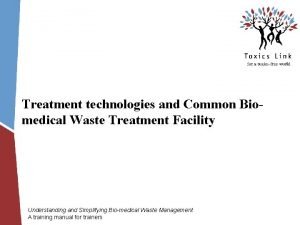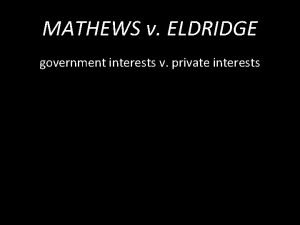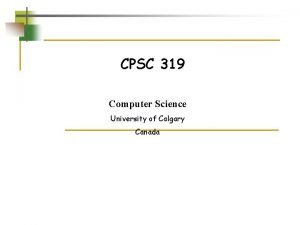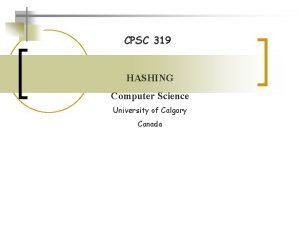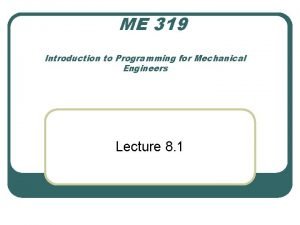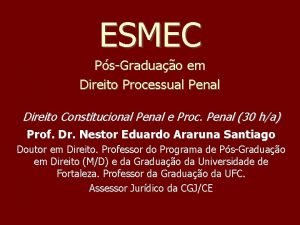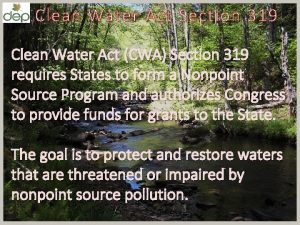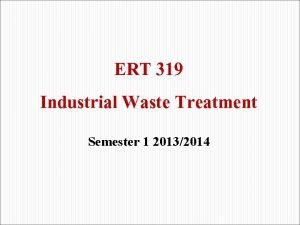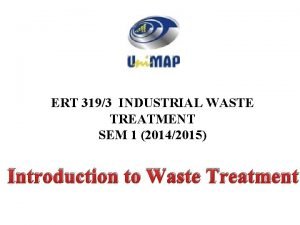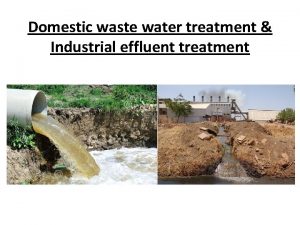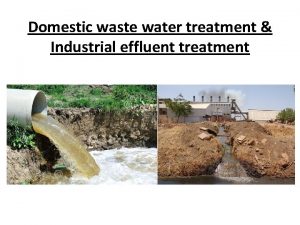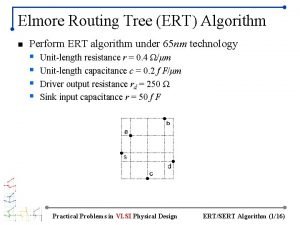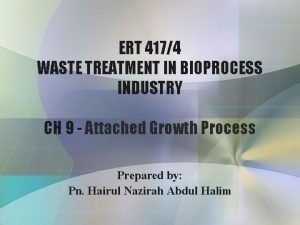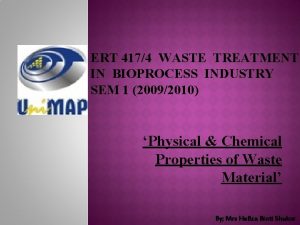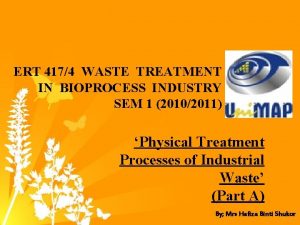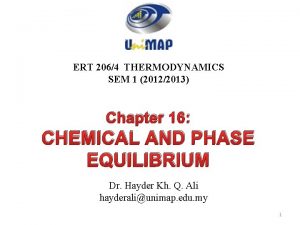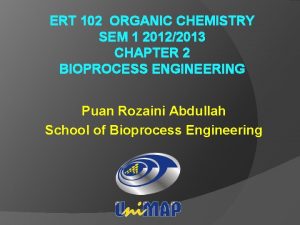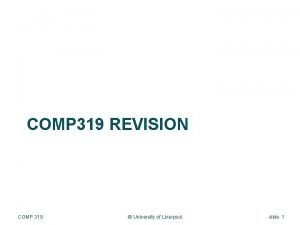ERT 319 Industrial Waste Treatment Semester 1 20122013


















- Slides: 18

ERT 319 Industrial Waste Treatment Semester 1 2012/2013 Huzairy Hassan School of Bioprocess Engineering Uni. MAP

INCINERATION

Incineration - Alternative to landfill. - Incineration is the oxidation of the combustible material in the waste to produce heat, water vapor, nitrogen, CO 2, and O 2. - Others may be formed, ex: CO, HCl, HF, NO, SO 2, heavy metals, etc. - Incineration now for waste disposal, energy recovery and economic necessity.



- Advantages over landfill: 1) can be carried out near the point of waste collection. 2) the waste is reduced into a biologically sterile ash product ~ 10% of its pre-burnt volume & 33% of its pre-burnt weight. 3) does not produce methane, unlike landfill (greenhouse gas) 4) as low-cost source of energy to produce steam, for electric power generation, industrial process heating or hot water conserving valuable primary fuel resources. 5) the bottom ash residues can be used for materials recovery or as secondary aggregates in construction. 6) the best practicable environmental option for many hazardous wastes such as highly flammable, volatile, toxic and infectious waste.

Disadvantages: 1) Higher cost, longer pay-back periods, due to high capital investment. 2) Lack of flexibility in the choice of waste disposal once chosen, because high capital cost tied to long-term waste disposal contracts. 3) Removal of materials such as paper and plastics for recycling may reduce the overall calorific value of waste may affect incinerator performance. 4) Some public concern that the emitted levels may still have an adverse effect on health. 5) Incineration still produce a solid waste residue which require further management.

Types of incinerator: 1) Mass-burn incineration 2) Other types – fluidized bed, cyclonic, starved air or pyrolytic, rotary kiln, etc.


Mass burn incineration Sections: 1) Waste delivery, bunker and feeding system 2) Furnace 3) Heat recovery 4) Emissions control 5) Energy recovery via district heating and electricity generation.



Gas clean-up

Gas clean-up Cyclones- remove particles larger than 15 µm, but incinerator particulates < 15 µm size. Thus, its only used as a preliminary collector, prior to electrostatic precipitator of fabric filter. Electrostatic Precipitators- the dust-laden gas stream enters EP, the particles are charged by –ve ions by corona discharge in an intense electrostatic field, then attracted to oppositely charged collector electrode plates, then the particles accumulate. Fabric Filters- consist of a series of elongated, permeable fabric bags through which the particulate-laden gas flow and filter out the particles from gas stream. Can remove particles with submicron size. Can be coated with additives where adsorption take place.

Cyclones

Wet Scrubbers (Dry or semi-dry scrubbers)- remove soluble acid gases such as hydrogen chloride, hydrogen fluoride and sulfur dioxide. The acid gases passes through spray of liquid (alkaline solution such as Ca. OH or Na. OH). Then, hydrochloric or hydrofluoric acids produced, thus remove heavy metals which are soluble in acid solutions. De- NOX systems- Nitrogen oxides, NOX (NO & NO 2) are formed from nitrogen in the air used for combustion and in fuel itself at high temperature. Contributes to acid rain and act as photochemical oxidant in the atm. To reduce NOX control the combustion conditions (lower T, lower O 2 levels) use Non-catalytic reduction using ammonia (high T 850 -950 ⁰C) controlled by selective catalytic reduction, SCR (ammonia added, low T, wide T range, Pt, Pd, etc)


THANK YOU

